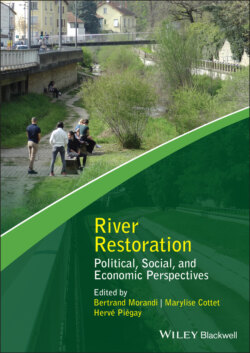Читать книгу River Restoration - Группа авторов - Страница 43
2.2 Three challenges of river restoration
ОглавлениеAs noted in Section 2.1, the case discussed by Elliott (1982) at the outset of “Faking Nature” is that of a mining company using the argument that a perfect or near‐perfect reconstruction of an ecosystem is possible to justify the almost total destruction of the ecosystem in the present. In this case, it seems reasonable to say that the restored ecosystem will in many respects be a human artefact, for it will have been designed and put together by human beings on a now barren landscape, albeit on the basis of a model provided by nature. But not all ecological restorations fit this pattern. In the case where restoration consists only of reintroducing a lost species, for example, it is far less clear that the resulting ecosystem counts as an artefact. Likewise, there are forms of restoration in which human intervention is conceived and practiced as merely complementing or accelerating natural processes of self‐regeneration, in which case it is again far from clear that the resulting ecosystem is an artefact (Palmer et al. 1997). In response to objections such as these, Katz (2012) argues that ecological restorations always sit somewhere on a continuum. In some cases, where human intervention is maximal, as in the case of restoration after strip‐mining or the displacement and reconstruction of a river section, the resulting ecosystem is largely artificial. In other cases, where human intervention is minimal, as is the case when volunteers remove garbage from a local stream, the resulting ecosystem remains largely natural. In every case, however, Katz insists that the act of restoration introduces an element of artificiality and a corresponding loss of naturalness, and therewith also of value.
But even if one accepts the idea of a continuum of more or less natural restorations, Elliott and Katz’s basic assumption about what restoration is – the attempt to reconstruct a clearly delimited portion of wild nature – does not fit well with typical cases of river restoration. Indeed, there are three key attributes of river restoration that set it apart from the paradigmatic cases discussed by Elliott and Katz and which together give rise to what I consider the three most ethically significant challenges of river restoration.
